Simyonov Monastery
Founded in 1370 by the monk Fyodor, a nephew of Sergey of Radonezh, the Simyonov Monastery (Simyonovskiy monastyr) resisted many Sieges until it was sacked by the Poles during the Time of Troubles. It was rebuilt in the 1640s with even thicker walls, remaining one of Moscow's mightiest defensive outposts, known as “Moscow's Sentinel” for several hundred years.
Pictures by Joost Lemmens
However, its isolated spot by the river was considered a prime site for a football stadium and palace of culture, and in the 1930's two-thirds of it were bulldozed to make way.
The stadium and palace now stand just to the north, and together with the
monastery's ruins attest to both its former strength and to the Soviet ravages
that surpassed anything inflicted by foreign invaders.
In its medieval heyday the monastery owned twelve thousand "souls" and a score of villages, while its walls encompassed three times the present area - a measure of how much was destroyed to create the Torpedo Football Stadium and the ZiL Palace of Culture, which was the largest and most lavishly appointed of the workers' clubs built in the 1930s.
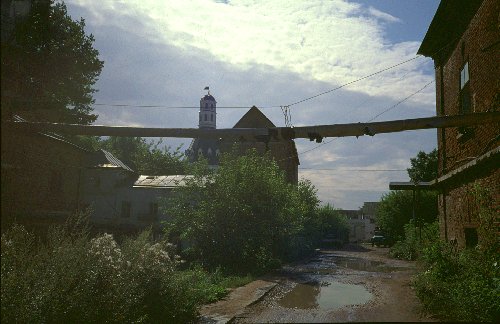 |
You enter the grounds through a gate in the fence beyond the roadside tower, to find abandoned cars and heaps of rubble where 19th century visitors were delighted by “gardens of marigolds and dahlias, and bees humming in hedges of spiraea”. |
Refectory & Dulo Tower
|
|
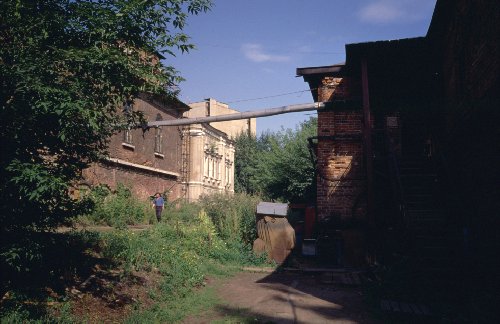 | Ahead looms the large derelict Church of the Tikhvin Mother of God, which contains a workshop that previously turned out busts of Lenin, and now makes theatrical props. |
Church of the Tikhvin Mother of
God (L)
|
|
Its exterior was once painted to resemble
multicoloured facets, traces of which remain. There used to be six
churches (the oldest built in 1405), but in 1934 five of them were blown
up in a single day. |
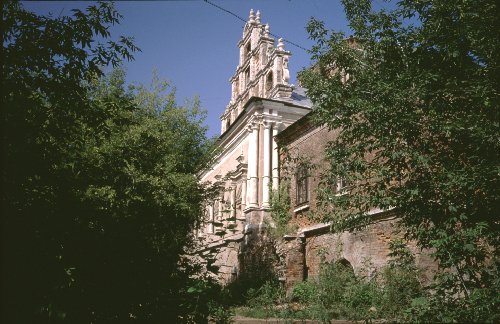 |
Church of the Tikhvin Mother of God
|
|
The most impressive feature of the ruins is a
250-metre-long section of fortified wall(which once totalled 655m in
length), guarded by three massive stone towers that have recently been
restored. |
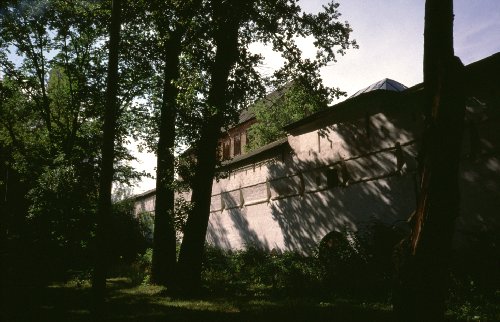 |
Outside the Southern Wall
|
|
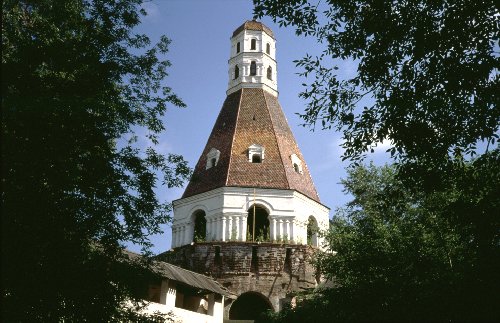 |
Fyodor Kon, who designed the walls of the Beliy Gorod, is thought to have created the Dulo Tower on the corner by the river, with its tiers of windows at staggered intervals. The archers' gallery and tent-roofed spire were added in the 17th century, when the towers of the Kremlin received similar additions. |
Dulo Tower
|
|
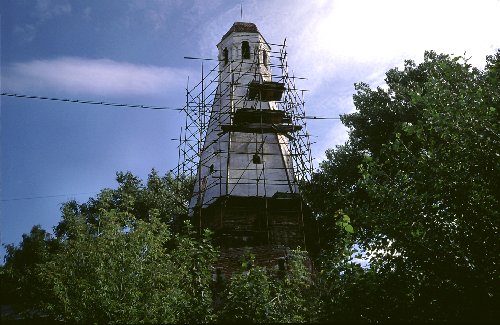 | Nearer the road, the Solevaya and Kuznechnaya towers resemble giant mushrooms. |
Solyevaya Tower
|
|
Since regaining ownership of the Simonov in 1994, the Church has struck a
deal with the firms on the premises: they are allowed to remain for a while but
must contribute funds to its restoration.
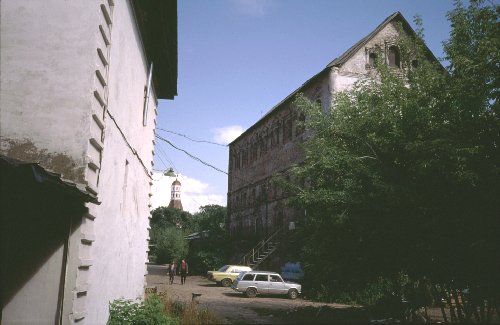 | Depending on the pace of work, the church may still serve as a factory and the four-storey refectory as a warehouse, but the monks' block by the rear wall has already reverted to its proper function. |
Monks House (l) Kuznechnaya Tower & Refectory
|
|
The ZiL Motor Works (Avtozavod imeni Likhachova), Russia's oldest car factory
(founded in 1916), which although trucks form the bulk of its output, was best
known for the ZiL limousines formerly used by Party leaders.
Today, the factory, on the far side of the park outside the monastery, has
fallen on hard times and will soon be as decrepit as the monastery. It is an odd
setting for the resurrected Church of the Nativity of the Virgin in Old
Simyonov, built in 1509.
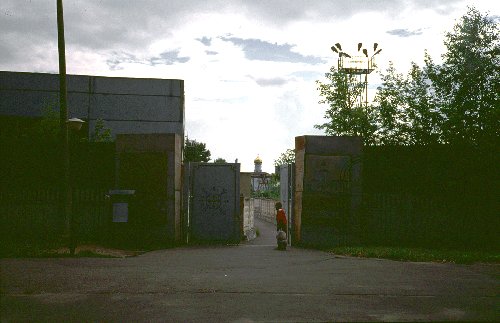 |
Previously used as a compressor-shed, it now boasts a new Iconostasis and a charming garden (services at 5am & 5pm). To have a look, enter the factory by the park gate and simply follow the walkway.
|
ZiL Motor Works &
Church of the Nativity
|
|
Home |
Next Page: Novodevichiy Convent >>
Links
My Other Pages:
Mail:







